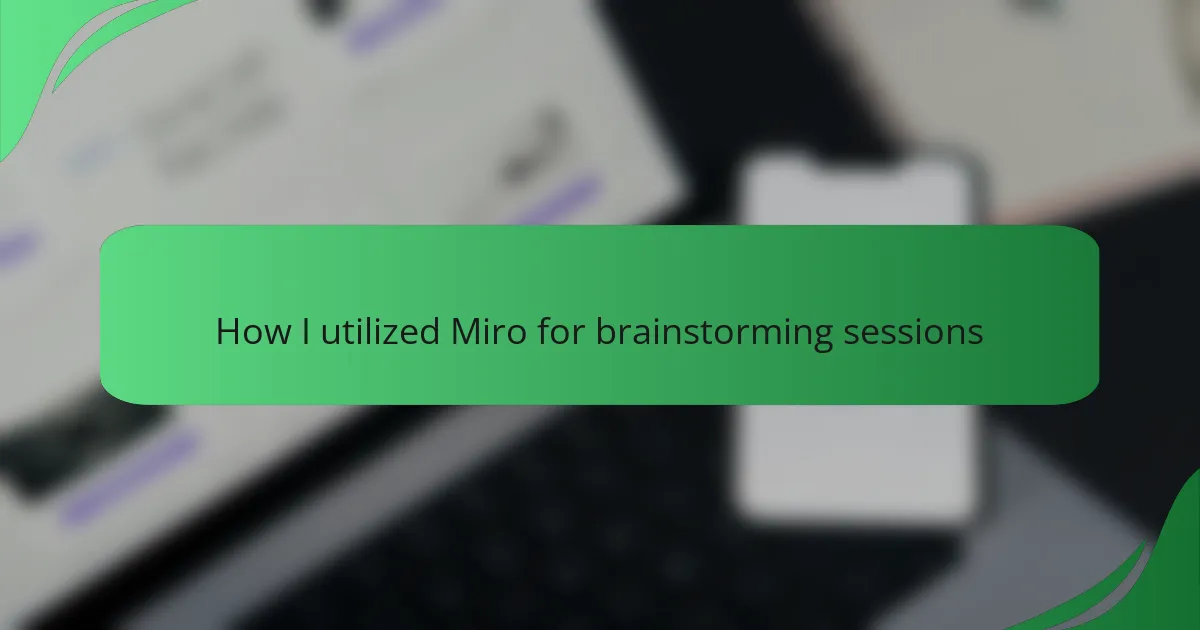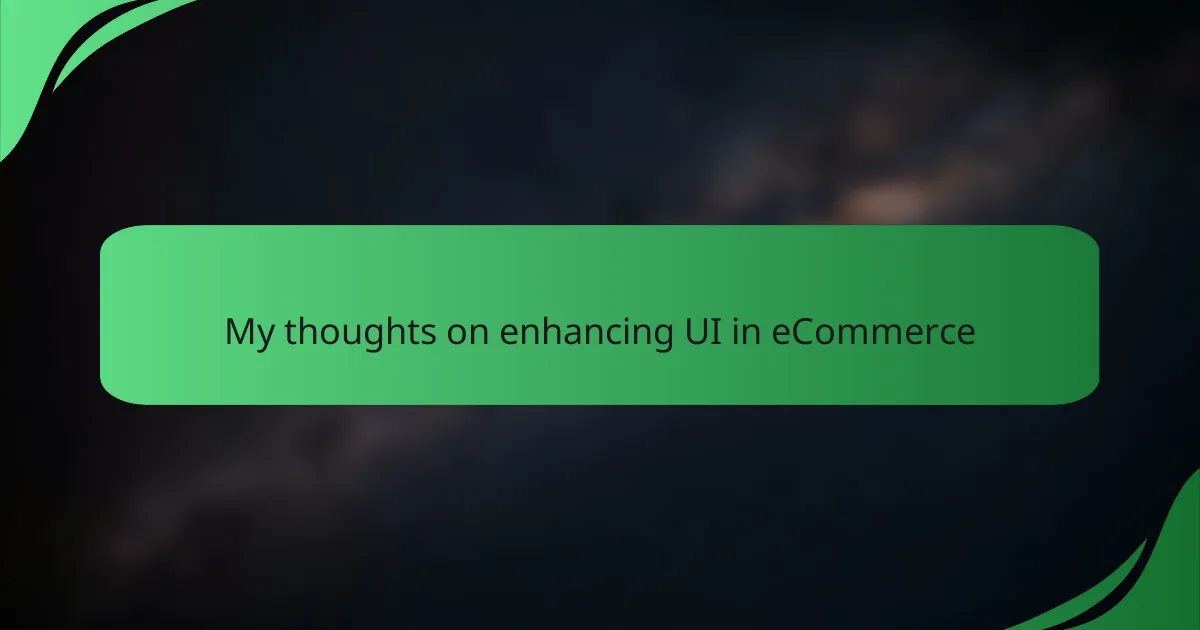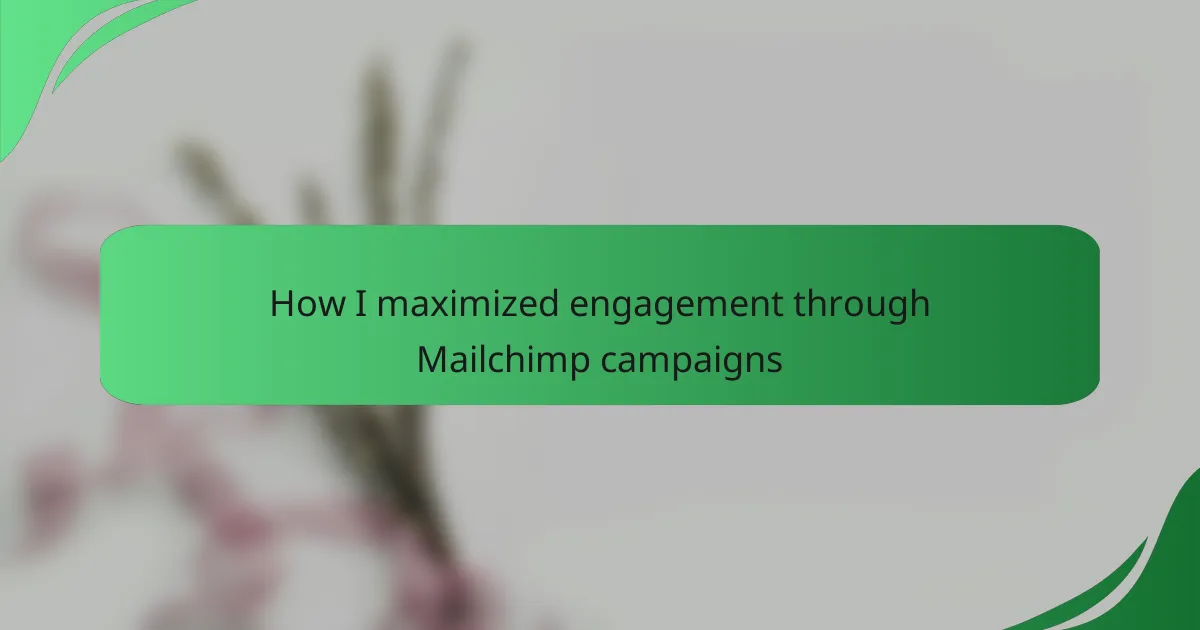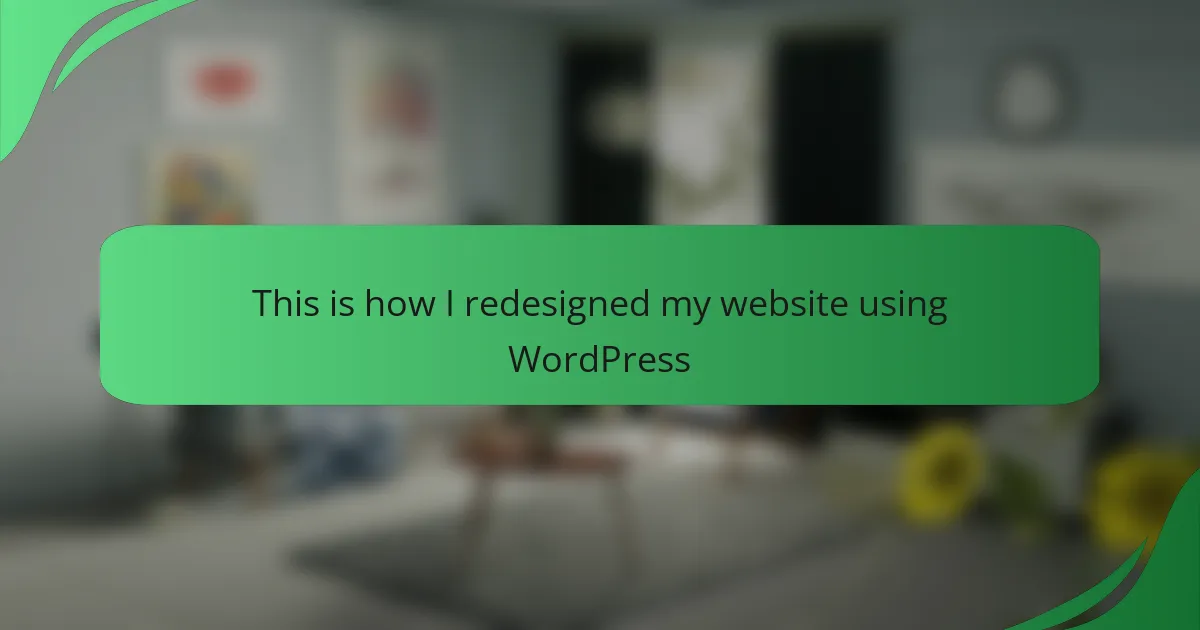Key takeaways
- Interface interaction design focuses on creating meaningful connections, where small visual changes can significantly impact user experience and emotions.
- Brainstorming is essential for fostering creativity and collaboration, with tools like Miro enhancing dynamic interaction during sessions.
- Customizing brainstorming tools, such as Miro’s templates and visual elements, can clarify ideas and boost team engagement.
- Setting clear goals and inviting contributions before sessions lead to more structured and effective brainstorming discussions.
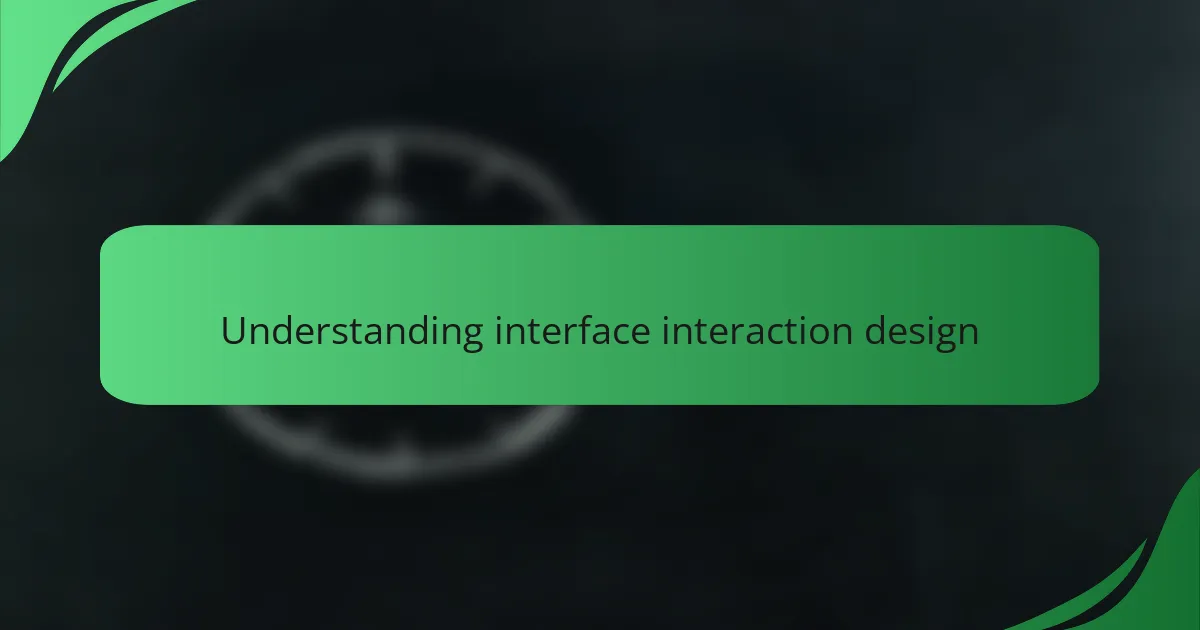
Understanding interface interaction design
Interface interaction design is about creating meaningful connections between users and technology. When I first started exploring this field, I was surprised at how much thought goes into every button, icon, and layout. It made me wonder: how can something seemingly simple influence user behavior so profoundly?
In my experience, a well-designed interface can evoke emotions and lead to a more intuitive experience. I remember a specific project where small changes in color and spacing transformed user feedback from confusion to delight. Have you ever felt frustrated because a website didn’t respond to your clicks? That’s the power of interface design—it can either enhance or hinder the user experience.
Understanding the principles of interaction design isn’t just about aesthetics; it’s about empathy. I often reflect on my past missteps in design, where I overlooked user needs in favor of visual appeal. This taught me to prioritize user feedback and understand their needs, ultimately leading to more successful designs. What have your experiences taught you about connecting with users on a deeper level?
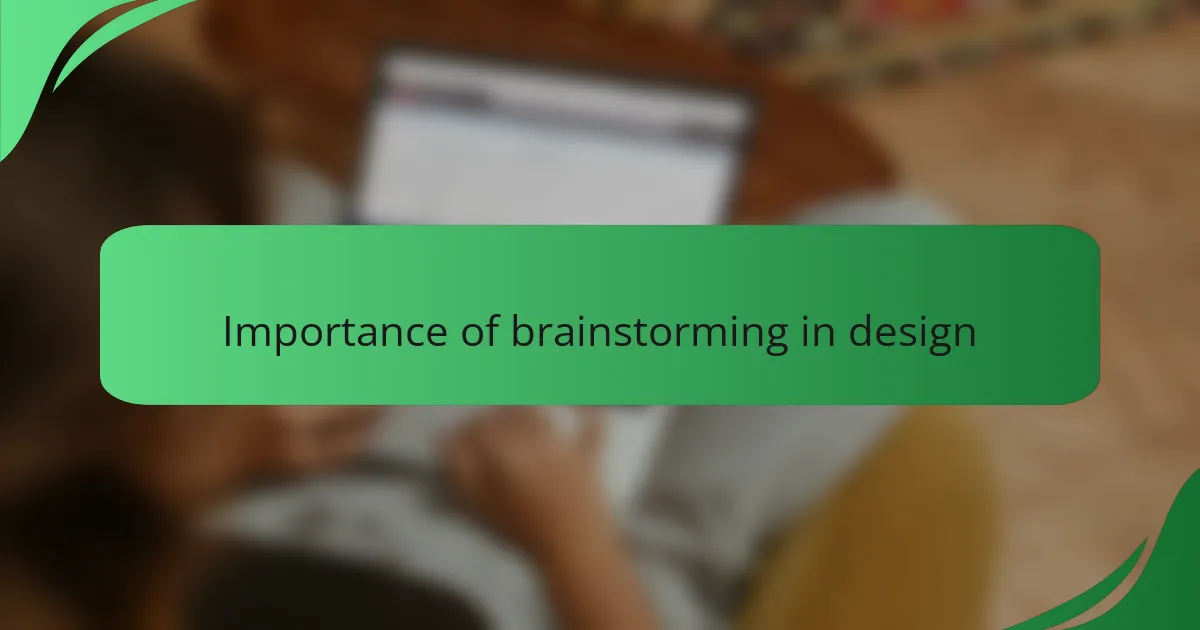
Importance of brainstorming in design
Brainstorming is the lifeblood of the design process. It allows team members to express their ideas freely and helps uncover innovative solutions that might not surface in traditional meetings. In my experience, when I engage in brainstorming sessions, I often find that the energy generated can lead to breakthroughs that transform the entire design direction.
One memorable session I had involved mapping out user journeys with my team. Everyone was encouraged to voice their ideas, no matter how outlandish they seemed. This open environment not only fostered creativity but also strengthened our collaboration, making us feel more connected and invested in the project.
When I reflect on these sessions, I realize the importance of a platform that allows for dynamic interaction, which is where tools like Miro shine. Being able to visualize ideas in real-time while receiving immediate feedback significantly enhances the brainstorming experience.
| Aspect | Brainstorming |
|---|---|
| Creativity | Unlocks unlimited ideas |
| Collaboration | Fosters teamwork and connection |
| Innovation | Encourages out-of-the-box thinking |
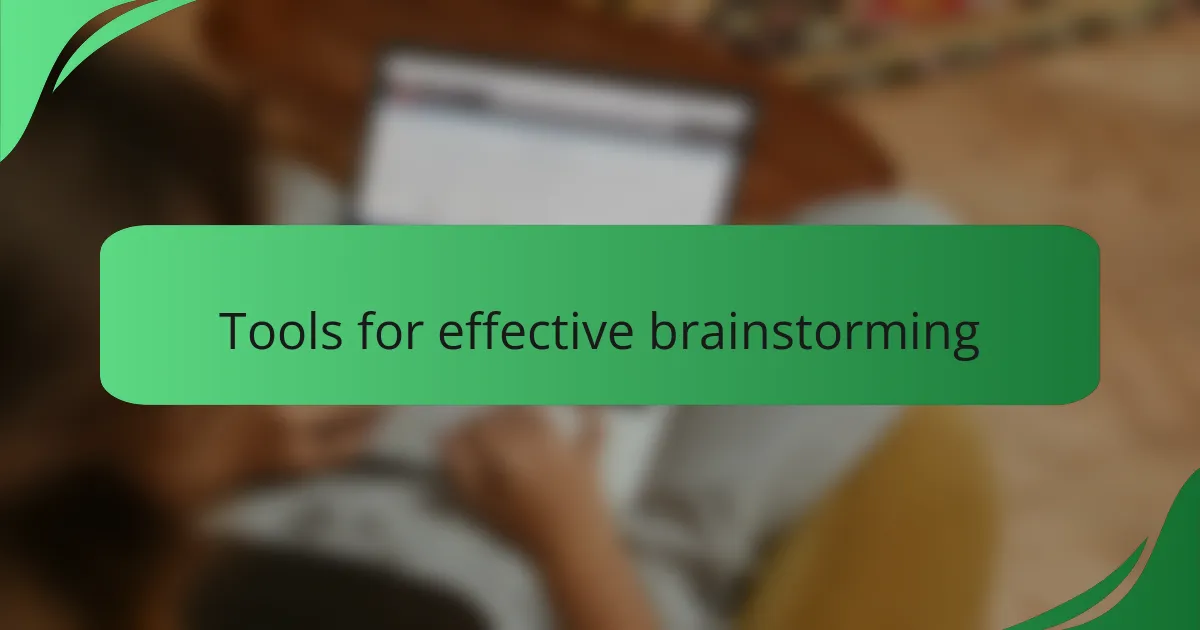
Tools for effective brainstorming
When it comes to effective brainstorming, choosing the right tools can make a world of difference. Personally, I find that Miro stands out among various options due to its interactive canvas that encourages collaboration. I remember a recent session where team members, who were usually hesitant to share their ideas, became more engaged when using Miro’s sticky notes and drawing features.
In contrast, while tools like Google Docs provide a straightforward document-sharing experience, they lack the dynamic interaction that fuels creativity. I often see people struggle to convey their thoughts in a typical text format, which can stifle inspiration.
Here’s a comparison of some popular brainstorming tools:
| Tool | Key Features |
|---|---|
| Miro | Interactive canvas, sticky notes, drawing tools, real-time collaboration |
| Google Docs | Text-based, simple sharing, comment features |
| MindMeister | Mind mapping, visual organization, collaboration features |
| Stormboard | Brainstorming with sticky notes, voting features, collaboration |
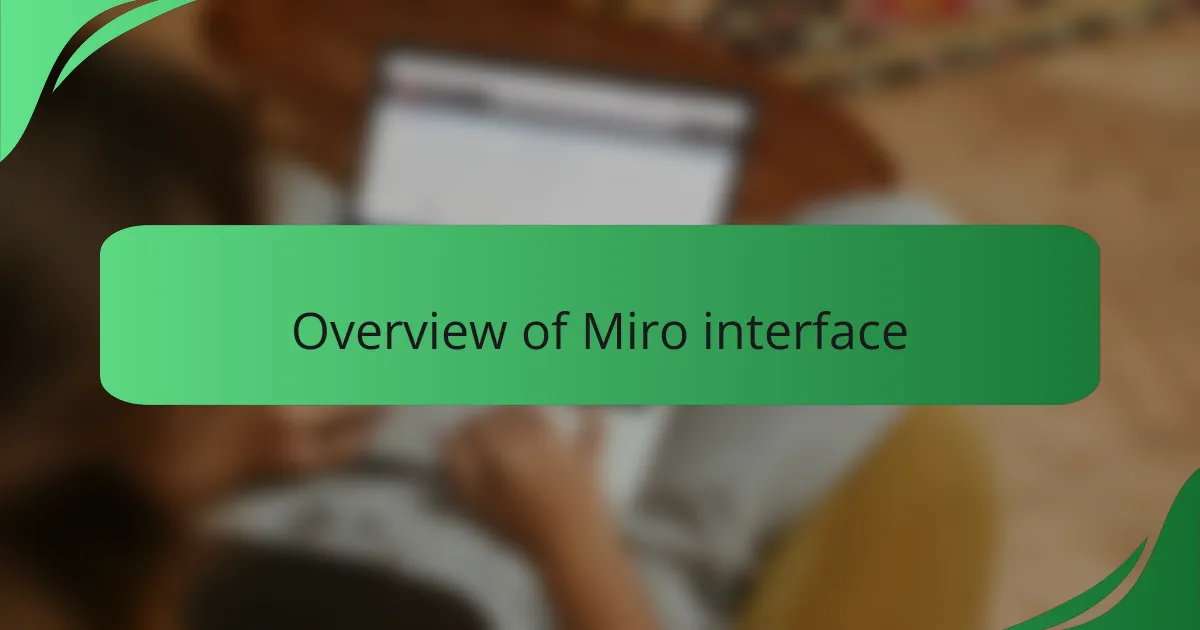
Overview of Miro interface
Miro’s interface is intuitive and visually appealing, making it easy for anyone to dive right in. I remember the first time I used it; I was struck by how quickly I could set up my workspace with a blank canvas, which immediately sparked my creativity. The endless online boards, sticky notes, and drawing tools felt like an artist’s palette, inviting exploration and collaboration.
One aspect that stands out to me is Miro’s seamless integration with other tools I often use, such as Slack and Google Drive. This connectivity not only streamlines my workflow but also ensures that my ideas can flourish without the hassle of switching contexts. It’s as if Miro understands the chaotic nature of brainstorming and provides a structured way to harness that energy effectively.
Here’s a quick comparison table showcasing Miro against some other popular tools for brainstorming:
| Feature | Miro | Tool A | Tool B |
|---|---|---|---|
| User Interface | Intuitive and visual | Complex and cluttered | Minimalistic |
| Collaboration | Real-time collaboration | Limited | Real-time with restrictions |
| Integrations | Wide range of integrations | Few integrations | Moderate integrations |
Through my experiences, I’ve found that Miro’s user-friendly interface and flexibility contribute significantly to a productive brainstorming session, making ideation not just efficient, but genuinely enjoyable.
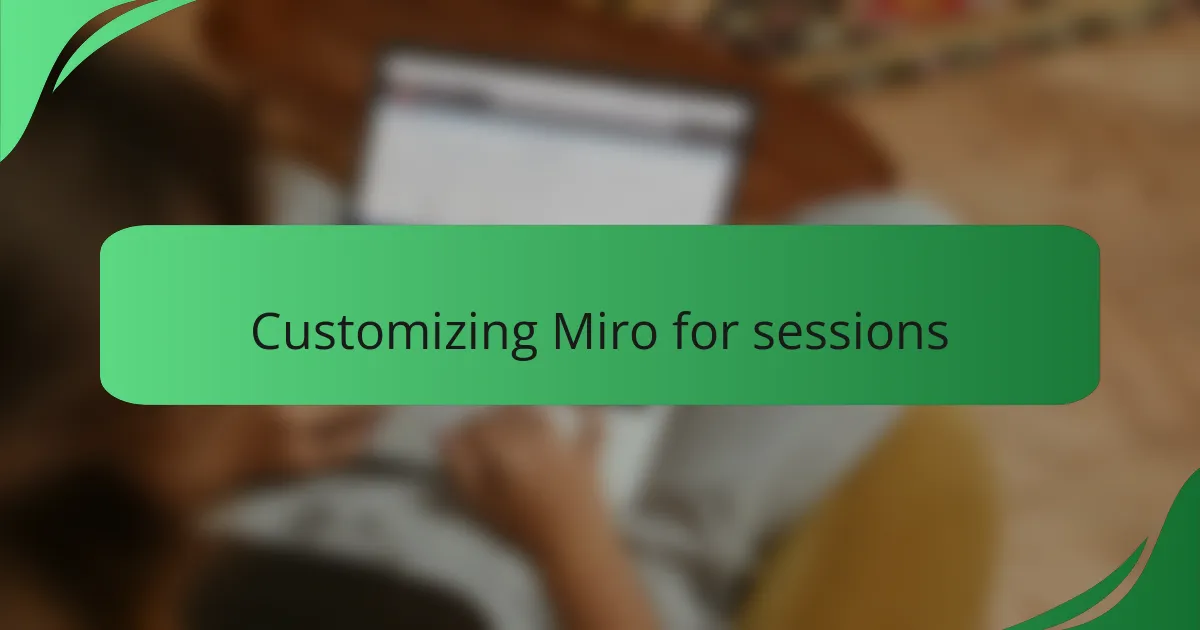
Customizing Miro for sessions
Customizing Miro for sessions is where the magic truly happens for me. I love how I can tweak the board’s layout to fit the specific needs of the team. For instance, during a recent design sprint, I adjusted the size of the sticky notes and organized them by themes. This simple change not only clarified our ideas but also made it easy for everyone to visualize our brainstormed concepts. Have you ever rearranged a workspace and felt a rush of inspiration? That’s exactly what I experienced.
What I appreciate most about Miro is the ability to use templates that suit the goal of the brainstorming session. There’s a template for everything—from user story mapping to SWOT analysis. I recall using a mind map template that helped my team break down complex ideas into manageable pieces. It was eye-opening to see everyone engage with the structure, and it fostered deeper conversations about our project. That’s the power of customization—tailoring Miro’s features makes the brainstorming process more effective.
Colors and visuals play a key role too. I often use color-coded sticky notes to differentiate between ideas, tasks, or concerns. This not only streamlines our discussions but also adds a sense of fun to the process. I remember someone commenting on how the bright colors energized our session. That remark stuck with me, reinforcing the idea that a little customization can significantly affect motivation and creativity during brainstorming. What customizations have you tried that elevated your sessions?
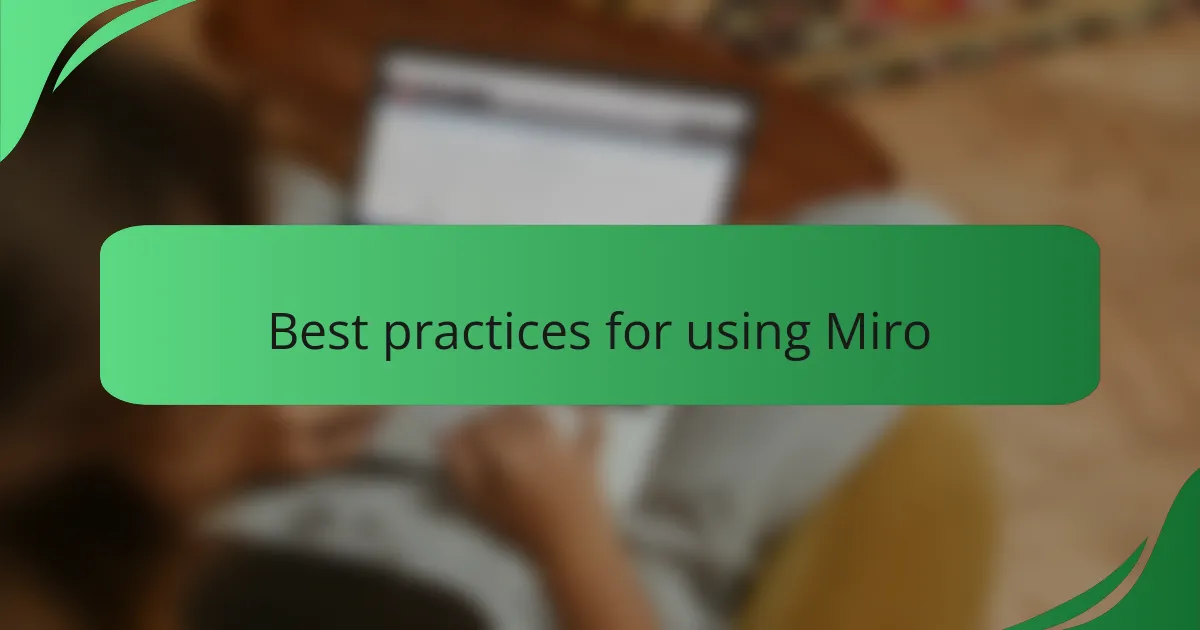
Best practices for using Miro
When I first started using Miro, I discovered that setting clear goals for each brainstorming session transformed our discussions. We often customized templates to fit our needs, making it easier to visualize our ideas. I also found that inviting team members to contribute before the session not only encouraged diversity of thought but also heightened our engagement during the meeting.
Another best practice is to utilize Miro’s sticky notes efficiently. By categorizing ideas as we went along, we created a more structured flow that made it simple for us to revisit and refine our concepts. I’ve learned that a little organization goes a long way when brainstorming!
Here’s a comparison of effective practices:
| Practice | Description |
|---|---|
| Set Clear Goals | Define the objectives of your session to keep discussions directed. |
| Use Templates | Customize templates to streamline idea exploration and visual representation. |
| Invite Contributions | Encourage team members to add ideas beforehand for a richer discussion. |
| Organize Ideas | Categorize sticky notes for clarity and easier access during reviews. |
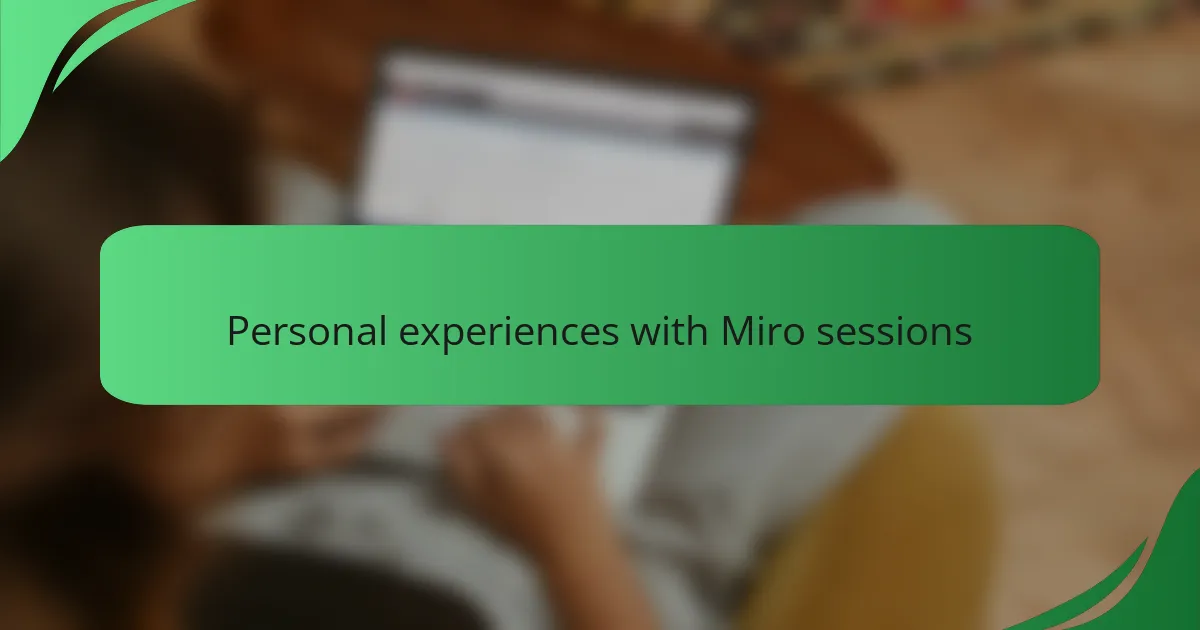
Personal experiences with Miro sessions
During my Miro sessions, I’ve often felt a surge of creativity that can only be described as exhilarating. I remember a session where all team members brought their unique perspectives to the table, and as we moved sticky notes around, the chaotic energy transformed into clarity. Have you ever experienced that moment when ideas crystallize, and everything just clicks? It’s a beautiful feeling.
Another experience that sticks with me involved using Miro’s built-in templates for our design brainstorming. I chose a journey mapping template for a client project, and it was like flipping a switch for my team. They engaged more deeply, and seeing our users’ experiences visualized on the board opened up discussions I hadn’t anticipated. It’s fascinating how the right structure can unlock new conversations, isn’t it?
I also find that the visual elements in Miro play a critical role in energizing our sessions. During one particularly lively meeting, we color-coded our sticky notes, and the vibrant contrasts seemed to spark even more enthusiasm. I can still recall someone exclaiming, “Look at all this color!” That moment reminded me how a little creativity not only keeps morale high but also fosters a space where great ideas can flourish.
